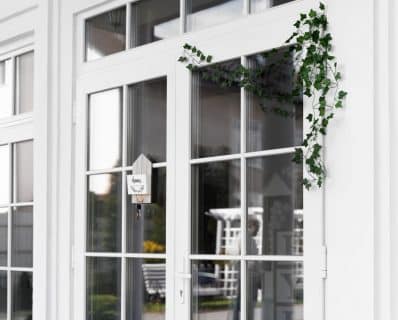Types of Windows and Their Lifespan

[toc]
Understanding how long do windows last in сanada is not merely a matter of practicality. It’s a safeguard against the harsh realities of the Canadian climate. As such, homeowners must be well-informed about the factors that influence window lifespan in Canada to make informed decisions when it comes to their homes.
Windows are an integral part of any home, playing a pivotal role in providing essential elements such as light, ventilation, and protection from the elements. In Canada, a country where extreme weather conditions are the norm, the durability and longevity of windows become a critical consideration for homeowners.
Factors Affecting Window Lifespan

Understanding the factors that determine window lifespan in Canada is paramount for homeowners. The country’s diverse climate, with harsh winters and coastal challenges, places unique demands on windows.
- Climate — the Canadian climate varies widely from region to region. Harsh winters, heavy snowfall, and temperature fluctuations can take a toll on windows. Coastal regions also face challenges like salt water exposure. These conditions demand windows with higher durability;
- Quality of materials — the choice of window materials is crucial. High-quality materials like vinyl, fiberglass, and aluminum are known for their durability in Canadian climates. Wooden windows, while beautiful, may require more maintenance;
- Installation quality — proper installation is essential. Even the best windows can underperform if not installed correctly. It’s advisable to hire experienced professionals to ensure a proper fit and seal;
- Maintenance and care — regular maintenance, such as cleaning, sealing gaps, and inspecting for any damage, can significantly extend the lifespan of windows.
Armed with this understanding, homeowners can make informed decisions, ensuring their homes remain comfortable, energy-efficient, and well-protected in the face of nature’s elements.
Different types of windows in the Canadian climate
Regular maintenance, including cleaning, sealing gaps, and inspections, plays a vital role in extending their lifespan.
- Vinyl windows — vinyl windows are a popular choice in Canada due to their durability and energy efficiency. When pondering the question of how long do windows last in Canada, it’s important to note that well-maintained vinyl windows can endure for an impressive span of time, typically ranging from 20 to 40 years;
- Fiberglass windows — fiberglass windows are known for their strength and resistance to temperature extremes. They have a lifespan of 30 to 50 years or more, making them a long-lasting option;
- Aluminum windows — aluminum windows are durable but may not insulate as well as other materials. With proper maintenance, they can last 20 to 30 years;
- Wooden windows — wooden windows have a classic look but require more maintenance in Canada’s climate. They can last 20 to 30 years or longer with meticulous care;
- Composite windows — these windows combine materials like wood and fiberglass for added durability. They typically last 20 to 30 years;
- Double-glazed vs. triple-glazed — windows with multiple panes offer better insulation. Triple-glazed windows tend to have a longer lifespan due to their enhanced energy efficiency.
The choice of materials, such as durable vinyl, fiberglass, or aluminum, is pivotal. Equally essential is proper installation, as even the finest windows may underperform without it.
Maximizing Window Lifespan
By following these four key guidelines, you can ensure that your windows not only endure the Canadian environment but also continue to provide comfort, energy efficiency, and protection for your home over the long term. Don’t forget to follow building codes of your area to prevent installation issues.
- Regular cleaning — keep your windows clean to prevent dirt and debris buildup, which can lead to damage over time;
- Seal gaps — inspect your windows for gaps or cracks, especially after extreme weather. Seal them promptly to prevent drafts and water infiltration;
- Routine maintenance — schedule annual inspections and maintenance with professionals who can identify and address issues early;
- Avoid harsh cleaners — use gentle, non-abrasive cleaners when cleaning your windows to avoid damaging the surface;
- Trim nearby trees — overhanging branches can cause damage during storms. Trim them to prevent collisions with your windows;
- Consider storm windows — in regions with severe winters, adding storm windows can provide extra protection and insulation;
- Upgrade insulation — improving your home’s overall insulation can reduce the strain on your windows and extend their lifespan.
Implementing these additional tips can help you maintain the longevity and efficiency of your windows in the challenging Canadian environment, ensuring they serve you well for years to come.
When to Consider Window Replacement
Even with proper maintenance, windows may eventually reach the end of their lifespan.
Here are signs of how long do windows last in Canada:
- Drafts and air leaks — if you notice drafts around your windows, it’s a sign that seals may have deteriorated, reducing energy efficiency;
- Condensation — persistent condensation between the panes of double or triple-glazed windows indicates seal failure and reduced insulation;
- Visible damage — cracked glass, rotted frames, or peeling paint are clear indicators that your windows need attention;
- Increased energy bills — older, inefficient windows can lead to higher heating and cooling costs. Replacing them with energy-efficient options can yield significant savings;
- Noise infiltration — if outside noise is becoming more bothersome, it could be due to failing window seals or inadequate insulation;
- Difficulty in operation — windows that are hard to open or close are not only inconvenient but also a safety hazard.
When you notice these clear signs of wear and tear on your windows, it’s a pivotal moment to contemplate window replacement. This decision goes beyond just addressing the visible issues; it’s about transforming your home into a more comfortable, energy-efficient, and aesthetically pleasing living space.
New windows can significantly improve the insulation of your home, helping maintain a consistent and comfortable indoor temperature year-round. Enhanced energy efficiency not only reduces your carbon footprint but also leads to substantial savings on your heating and cooling bills over time.
Moreover, replacing old, worn-out windows can rejuvenate the overall aesthetics of your home. It offers an opportunity to update your home’s look, whether you prefer a more modern and sleek design or a classic, timeless appearance. New windows come in a variety of styles, finishes, and configurations, allowing you to tailor them to your desired aesthetic.
So, when those telltale signs emerge, consider it a chance to invest in the well-being of your home, improving its comfort, energy efficiency, and visual appeal through window replacement.

Conclusion
So, how long do windows last in Canada depends on factors like climate, materials, and maintenance. While windows can last anywhere from 20 to 50 years or more, it’s essential to monitor their condition and act when signs of wear and tear become apparent. Regular maintenance and choosing high-quality materials can help extend their longevity, ensuring that your home remains comfortable and energy-efficient.
Remember that windows are an investment in your home’s comfort and value. By understanding the factors affecting their lifespan and taking proactive measures, you can enjoy the benefits of well-maintained windows for years to come.
Frequently Asked Questions
Haven’t got your answer? Contact our support now












